Breville Barista Express Espresso Machine BES870XL, Brushed Stainless Steel.
| Color |
Black Sesame ,Brushed Stainless Steel ,Cranberry Red |
|---|---|
| Brand |
Breville |
10 reviews for Breville Barista Express Espresso Machine BES870XL, Brushed Stainless Steel

Parturient ut id tellus vulputatre ac ultrlices a part ouriesnt sapien dignissim partu rient a a inter drum vehicula. Ornare metus laoreet tincidunt eros rolem tristique pretium malada.
Cras rhoncus vivamus luctus platea arcu laoreet selm. Curae est condenectus sed hac a parturient vestibulum.
Amazon Basics 12-Cup Coffee Maker with Reusable Filter, Coffee Pot, Coffee Machine, Black and Stainless Steel
Price range: $19.96 through $24.24
Select options
This product has multiple variants. The options may be chosen on the product page

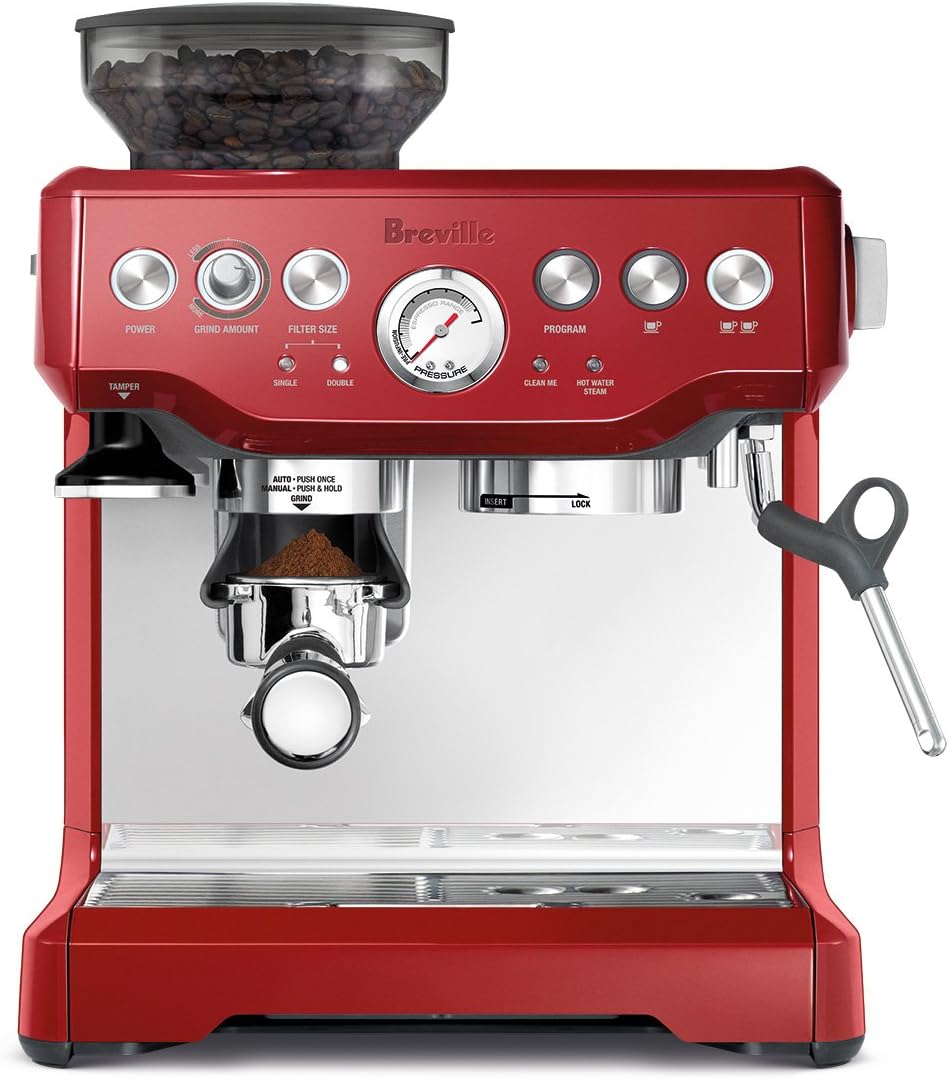

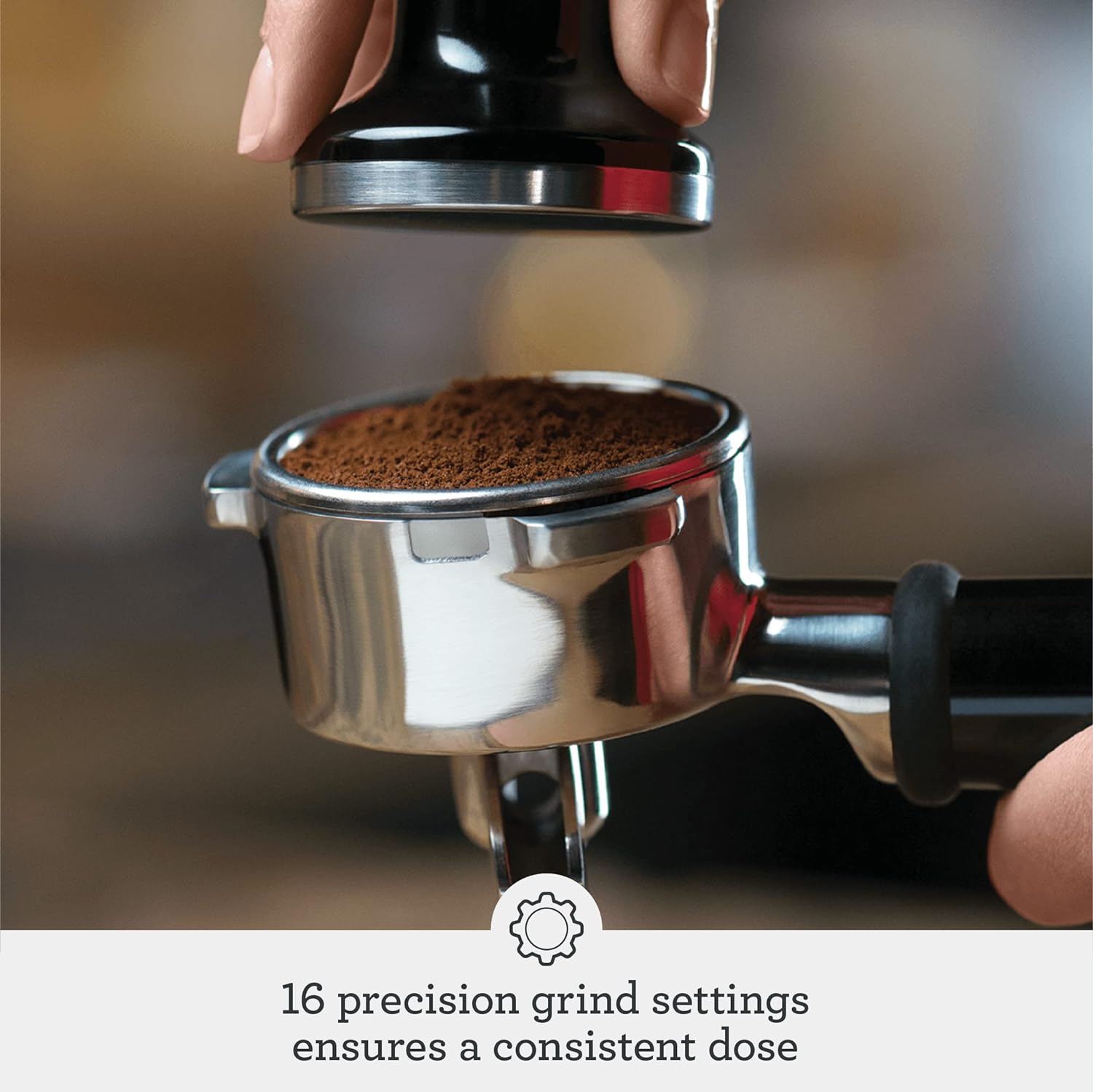
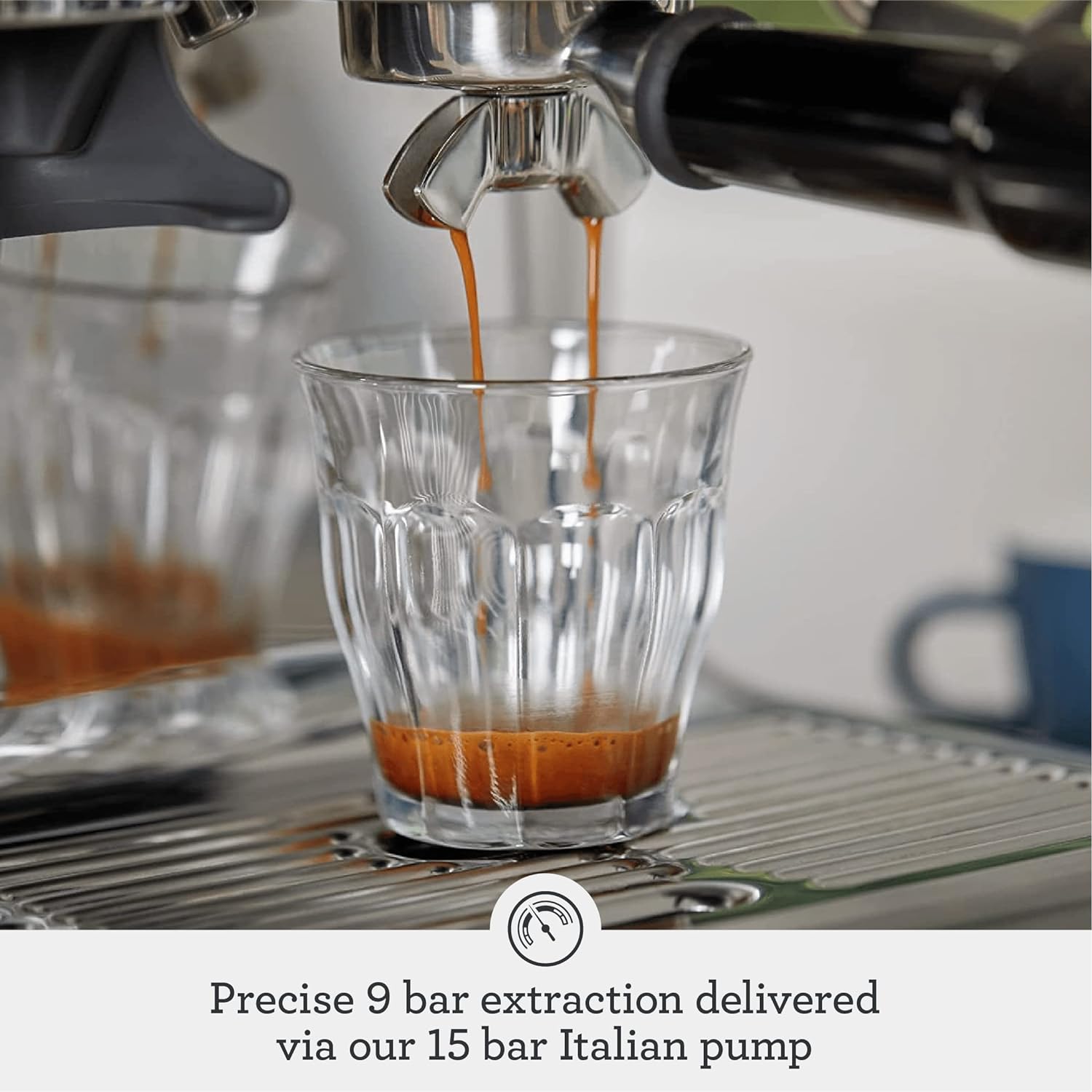
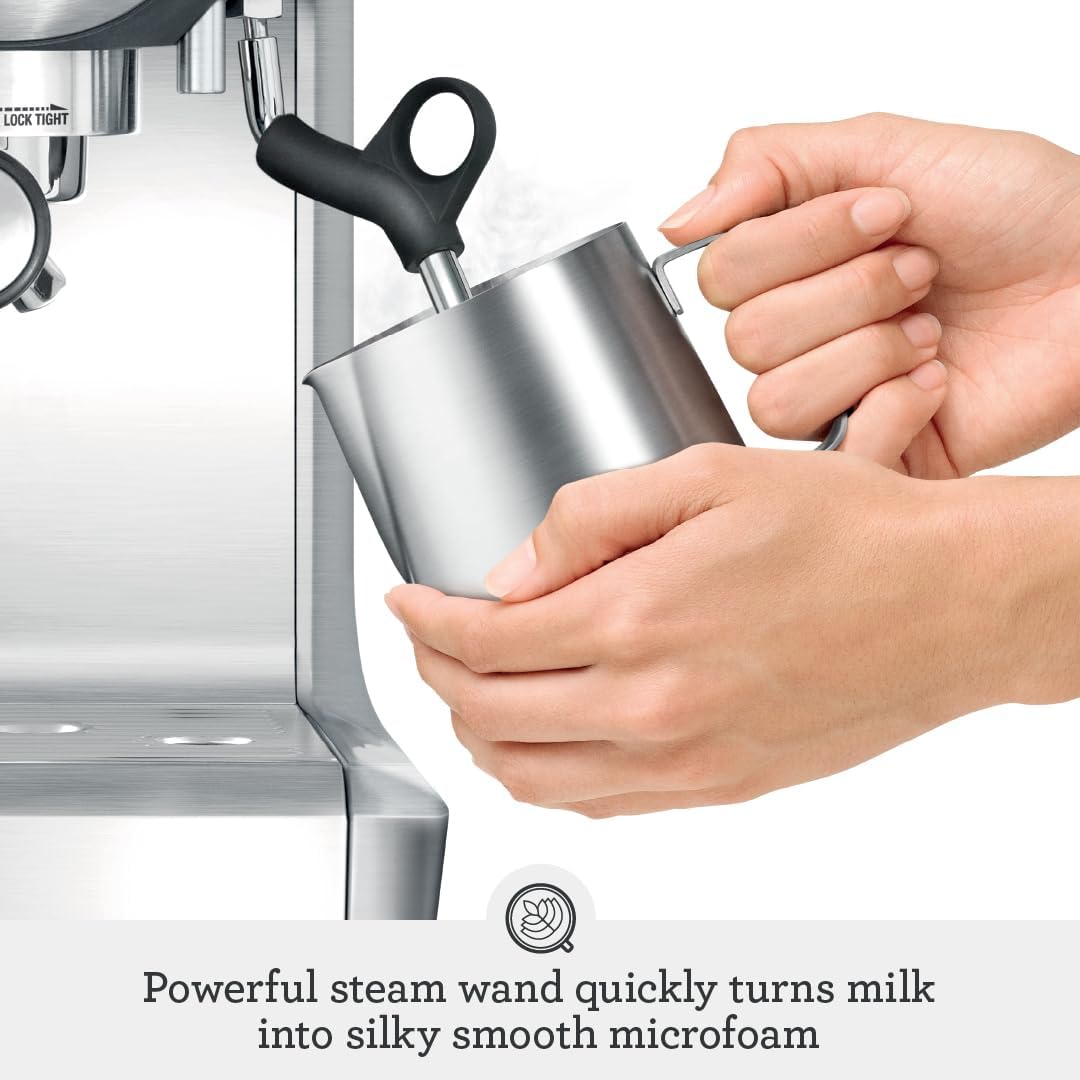
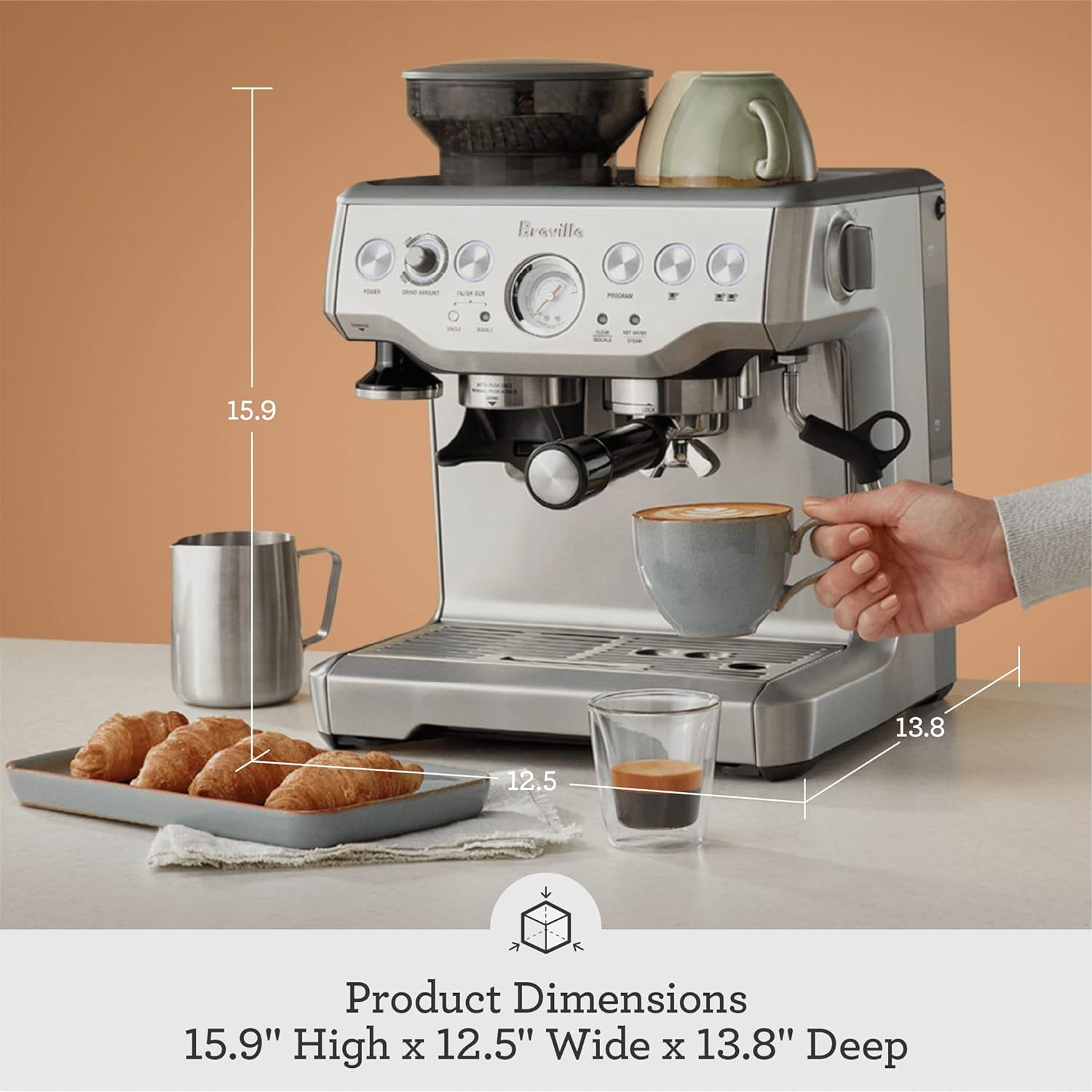
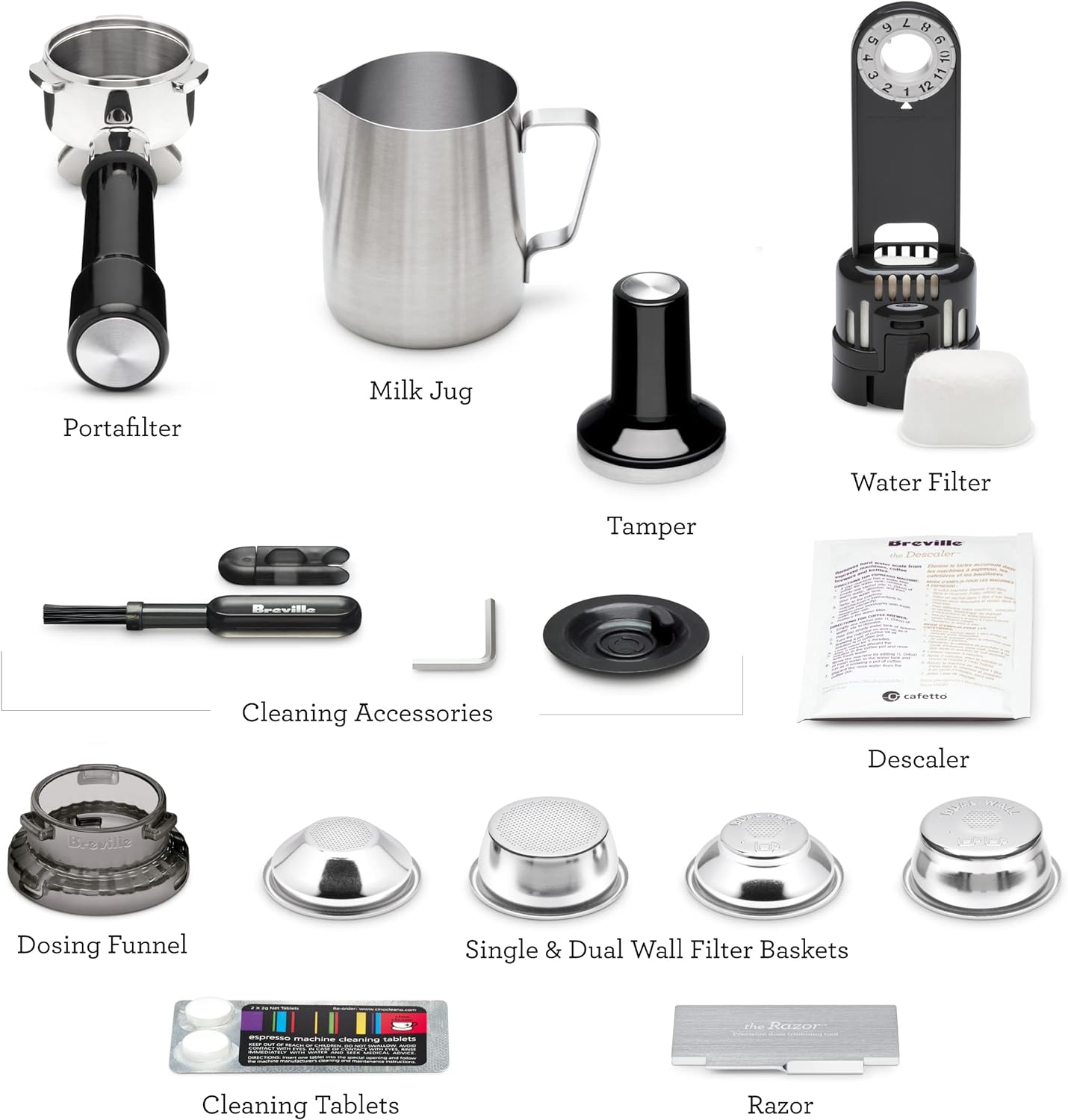
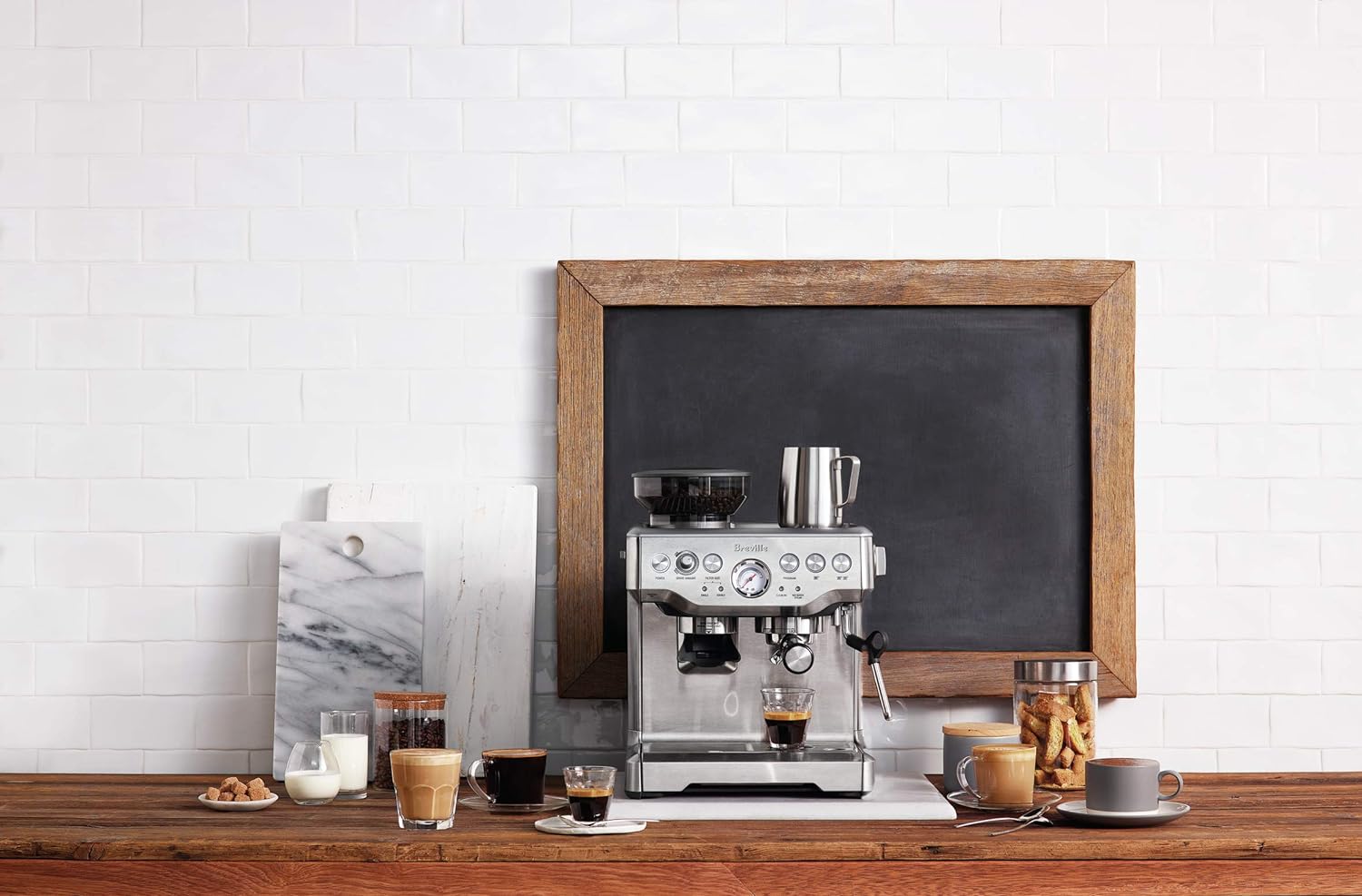

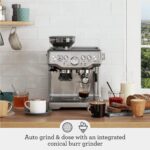
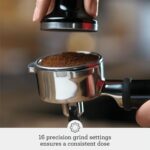

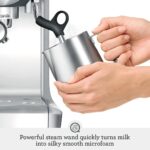
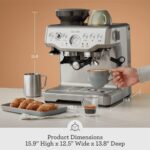
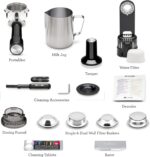



















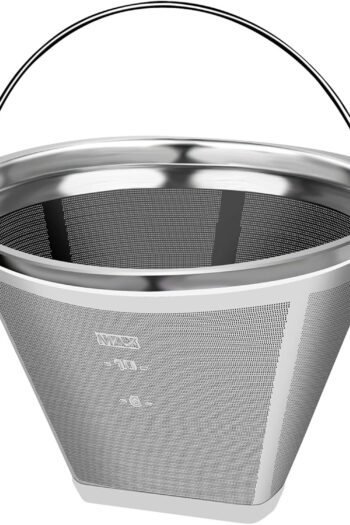
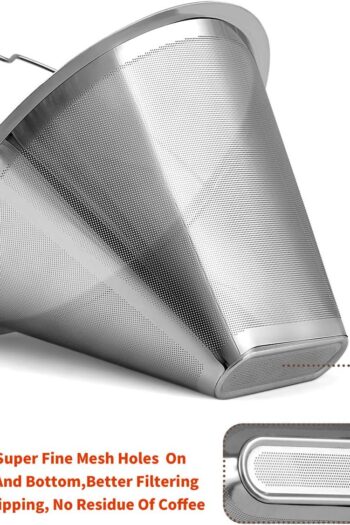
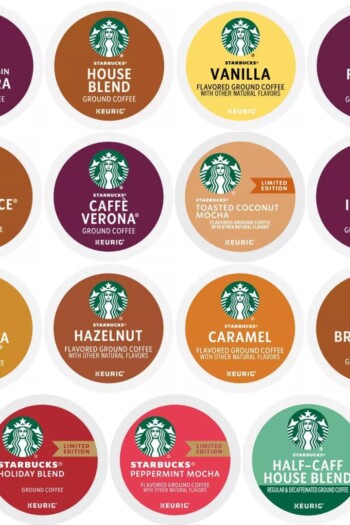
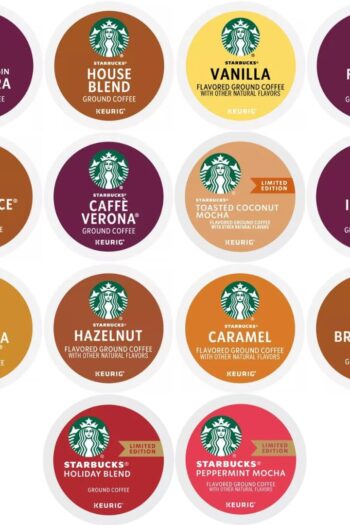
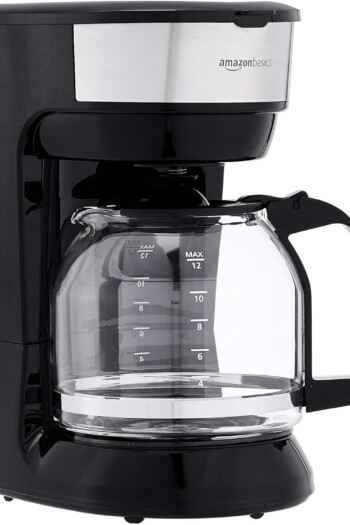
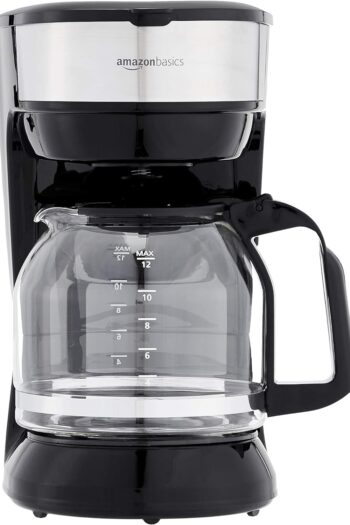

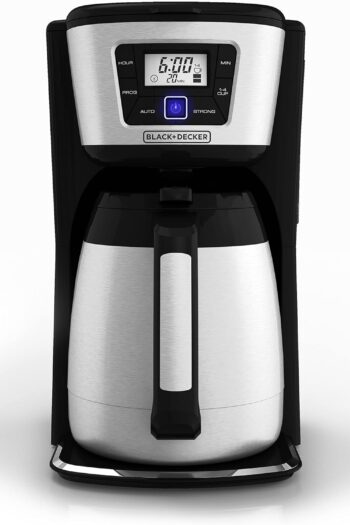
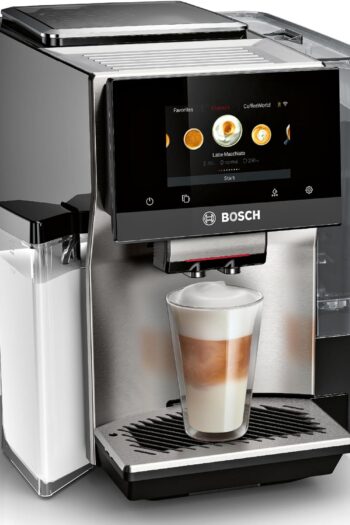

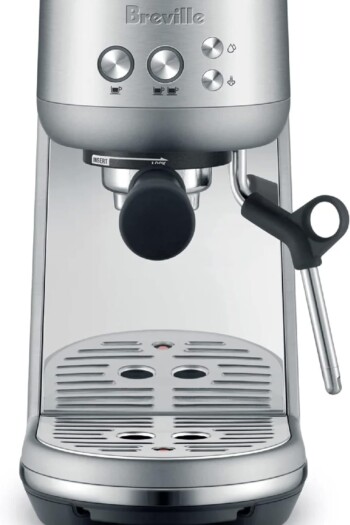
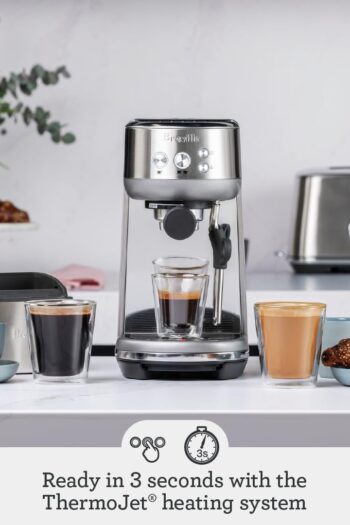
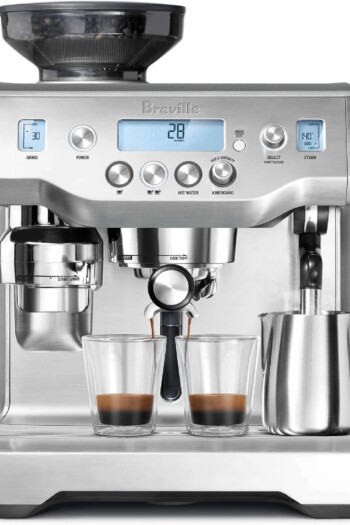
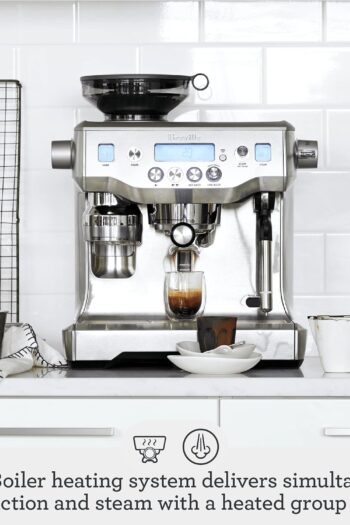
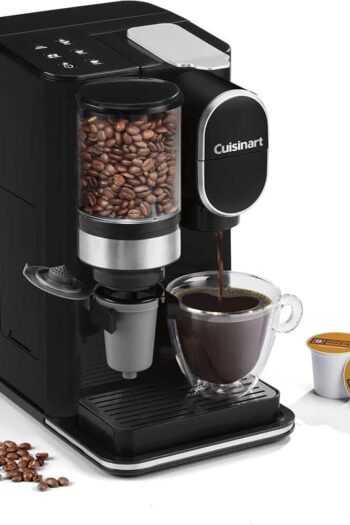
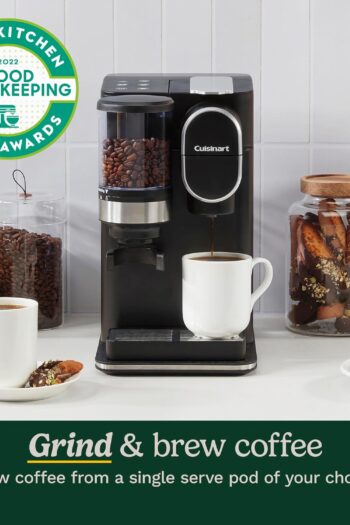
GCC (verified owner) –
5.0 out of 5 stars great product, one of the best purchases if you drink coffee
We have had the unit for 8 months now, it’s been through 4 cleaning cycles (2 descaling, 2 normal backflow), so I’ve ‘tested’ out most of the possible functions it has. We like it, a lot. If it dies this year, it is probably a break-even so far based on the number of times we’ve used it vice buying from coffee shops. At $5 a cup, you have to buy at least 120 cups to even do a simple break-even. Of course, using milk/substitute and other items at home adds to this cost. Assume that you have to run 200 cups at home that you otherwise would have bought elsewhere, and you have basically done a break-even. If you drive to get to the coffee shop, and buy other things, then it may save you a lot of money sooner. In my opinion, this unit easily costs less than what we would have done within a year.
The grinder seems to do a great job, and the dials to alter the size and amount, work well. I have had to clean it once since the grinds seemed to be working poorly, on Breville’s recommendation, running rice through the unit, and then cleaning it (removing the screw from the top), helped.
We have not tried other machines, having been satisfied with the reviews, and price, of this one as listed. So far, just great results. We tend to do espresso drinks each time, meaning we use the grinder, frother, and espresso for each drink. The machine would likely last longer with less maintenance needed if you just did espresso, and used preground beans (or had a separate grinder), most likely.
Family of 2 (with kid), in general we probably push through 4-6 cups a day on average, and up to 9 max at times. If we have guests, maybe 10-12, but not often. While we would certainly have NOT been buying this many from the local brewhouse, the quality of the product is just great.
We choose to use almond milk exclusively as our base, and we make it ourselves, so the quality of the milk will never be that of the rich and creamy milk frothed up, but it is still amazing. This machine does a great job of grinding, pushing hot water, and frothing, so we get a cup that literally is as good as we ever had anywhere, and with the quality we want. Most coffee shops, when they do have milk substitutes, use poor quality almond milk anyhow, and it affects the taste. If you haven’t tried making your own almond milk, it’s extremely easy – don’t bother unless you buy good almonds from Spain or California. Soak them (called sprouting), then blend 1 cup almonds to 4 cups milk. Then strain through a nut milk bag (or cheesecloth), and add 2-3TB honey, vanilla bean, pinch salt, cinnamon). Blend. Some folks have gently heated the almond milk on a stove which helps thicken it a bit, and actually makes it more of a milk consistency than the ‘almond juice’ that you get by just straining. Lots of different options, and chefs are still coming up with ways to handle this. But frankly, after doing the almond milk thing, we will not use anything else. Some folks also add some coconut creme to the mix, and it also thickens things a bit. There are excellent non dairy and healthy alternatives out there, and they work shockingly well.
We also pretty much gave up on buying beans from local brewhouses, we found the quality and taste not as good as we could do ourselves, so off we went and bought a small roaster (Fresh Roast SR700 Home Coffee Roaster), and frankly, this make the cycle complete – not only can we buy green coffee beans via amazon very cheaply, but we can also control how much we roast, and when we use them, making it a very turnkey and enjoyable experience.
I advise also buying the Knockbox from Breville – this is a great add on and helps you control the waste from the Portafilter. Great tool/wastebasket, and helps you inadvertently throw your grinds into the drain, not good if you have a septic system either!!
Agree with prior posters – use fresh beans, and consider roasting your own. The best bean we’ve found so far is the Colombian Huila (also sold on Amazon.com) – 5lb bag for $30 shipped. For about $6 a pound, you will have plenty of opportunity to find the roast level you want. Reason we like this particular bean (other than being available on amazon.com), when roasted to near or after second crack, it has a nice caramel/chocolate aftertaste to it. Not a bean expert here, but we’ve tried a dozen or so varieties, and for the price and availability, this is a really well priced and nice tasting bean. As mentioned before, we’ve done the local brewhouse roasted beans, and it’s basically russian roulette, and we’ve yet to find an ‘awesome’ tasting bean from them. The breville has a multiple of ways you can alter the taste by changing the temperature, grind, and amount of water through the bean, but some beans just aren’t suited for espresso, it seems. I’ll let the experts deal with that – once we find one that is suitable, we work more on the base taste, which is mostly affected by the milk/milk substitute that you use, unless you are just doing straight shots of espresso.
We like the machine so much, it’s worth considering taking with you on travel if you have the power, and way to store your own milk at your location. And yes, we’ve been at places with in-room espresso machines like the Ritz, which has in-room espresso from Nespresso, to places that have full kitchens with a variety of machines, and places with club level places that have fully automatic machines. We continue to be underwhelmed with the quality and taste that most places do. Yes, we’ve been in Italy and had the best espresso/cappuccino’s, and they can’t be beaten due to the location, ambiance, etc. This machine does a bang up job of that without the expense of travel – lol.
Frankly, Breville has provided a cost point and quality machine that is hard to beat. Other than my calling for help on a small grind question/issue, I have had no service issues yet.
From other posters, if there are substantial issues that start to creep up after the 1 year mark, it’s kind of a cost tradeoff to consider paying $250 for a repair, or just buying a new one. I guess there is also a warranty you can buy if bought through Amazon, that goes up to 4 years, so that may be an option to keep it running longer, and truly have cost savings for many years to come.
Vincent (verified owner) –
5.0 out of 5 stars The Breville Barista Express: An Excellent Choice for Espresso Beginners
As an aspiring home barista, I was seeking an espresso machine that could provide a high-quality brew without a steep learning curve. After extensive research, I landed on the Breville Barista Express, and I can confidently say it has exceeded my expectations.
At a sale price of $550, the Barista Express represents a reasonable investment for those looking to elevate their coffee game. Compared to many other semi-automatic machines on the market, this Breville model provides an exceptional value.
Aesthetically, the Barista Express is a real winner. Its sleek, stainless steel design seamlessly fits into any kitchen, blending in beautifully with surrounding appliances. The compact footprint also makes it easy to find a home on the countertop without dominating the space.
But the true star of this machine is its functionality. As other reviewers have noted, the ability to grind beans directly into the portafilter and then pull espresso shots is remarkably convenient and fun to experiment with. The grind size adjustment allows you to fine-tune the extraction to your personal preferences, providing a level of customization that is rare at this price point.
Possibly the most impressive aspect of the Barista Express, however, is its durability. I have been using this machine 4-5 times per week for the past 12 months, and it has held up remarkably well. There have been no issues or malfunctions, instilling a strong sense of confidence that this was a worthwhile investment.
Overall, the Breville Barista Express is an excellent choice for espresso beginners looking to take their coffee game to the next level. With its appealing design, intuitive features, and proven reliability, this machine is well worth the $550 price tag. Highly recommended for those seeking a gateway into the world of home espresso making.
Buddy (verified owner) –
5.0 out of 5 stars BUY THIS MACHINE, YOU WILL NOT BE SORRY…
I rarely write online reviews of products I buy, but I am so impressed by this machine I must share with people who are contemplating this purchase.
BOTTOM LINE:
This is an extremely good value for the price, and I would HIGHLY recommend this machine to anyone regardless of their experience level with making espresso-based beverages. Read on for more detail…
BACKGROUND:
I am very careful when buying products in this kind of price range, and thus do a lot of research before buying. This is especially true with something you can’t truly "try before you buy". I read over 100 of the reviews on this product, and although there are some complaints the major theme is very positive. I have been using the Breville daily now for almost two months and feel I understand it’s pro’s and con’s very well.
As a coffee person, my focus is on espresso, Americano, and lattes. I was never a drip-coffee person, but I have been a hardcore Starbucks latte guy for 6 years. I have talked at length to baristas over the years to get a more technical understanding of what makes great coffee, and previously owned a fully automatic machine from Saeco (about a $600 machine). When it came time to buy a new machine, I felt that I was ready to make the jump to a semi-automatic machine.
Lastly, I come from a technology background (e.g. Apple employee) and feel that I am a good judge of design, manufacturing, user interface, etc.
DESIGN:
This is an extremely well designed product. Every little detail, from the exterior & interior packaging to the controls on the front of the machine, is very thoughtfully done, well executed, and serves its intended purpose. From the beginning you see that it is a high quality product, and Breville spent money where it matters. The materials are visually appealing as well as sturdily built, with the kind of craftsmanship and heft you would expect from a much higher priced machine. Nice touches like having the tamper store in a magnetized hole in the top of the machine, having the top surface of the machine stay warm from the boiler to keep your portafilter and coffee cup warm, and creating a hidden accessories tray in the base of the machine are signs of top notch designers. Overall, the product is relatively compact and will fit into any size kitchen situation. Lastly, the user instructions are extremely well done and very helpful – READ THEM.
PERFORMANCE:
The espresso produced is extremely consistent, and only changes as your beans age (although a pretty small difference). The water boiler heats up very quickly and you will be drawing a shot less than 2 minutes after hitting the power button (part of this time is grinding the beans). The controls are easy to use, and the movable items such as the portafilter and steamer wand are holding up well and I have zero concern about long term reliability. The steamer wand, compared to my previous Saeco, seems to create much richer milk foam, which is important for lattes and cappuccinos. There are a number of "complaints" from people on these reviews about how difficult it is to get good espresso, but I can tell you my very first shot was good and has been ever since. I think these people are creating the wrong impression, as this machine is incredibly easy to use. However, it’s critically important that you read the instruction manuals FIRST to help ensure you get it right. The grind level is the only thing you really need to set, and that will be personal preference to some extent but for my beans it seems best at 4. The other thing you control is how hard to tamp the grounds in the portafilter, and I will tell you that if you give it a good strong press (I use two hands on a hard flat surface), it will be just fine. Don’t overthink this machine!
BEANS:
I strongly suggest you find a local shop that roasts their beans on-site so you can have truly fresh beans. You want espresso whole beans, and they need to be 100% Arabic and NOT the "oily" kind. Otherwise, you will gum up your grinder.
CLEANING:
Terrific design makes this a breeze to clean. The water and grounds catch tray just lifts out in one piece, and you can take everything to the sink without making a mess. A quick rinse and you are ready to put it back. One thing that cannot be avoided is that some of the coffee grinds will spill out of the portafilter during the grinding process, and may even fall off the coffee maker and onto the counter (or floor). I shake the portafilter mildly while its grinding to even out the grounds to minimize the mess, but even that doesn’t eliminate it completely. The other mess creator is tamping the grounds and levelling off the dose size, this will cause grounds to be spilled. Up to you how to contain this, although I just turn the dosing blade upside down and use it to scrape the grounds off my counter and into a bowl I use to catch the grounds when I level the dose. Overall it is quite minor and requires less than 5 minutes of clean-up a day.
Maddle (verified owner) –
5.0 out of 5 stars Best Entry-level Home Espresso Machine
I absolutely love this machine. With as many lattes as I drink, this will easily pay for itself within a year, inclouding the cost of beans, milk and cleaning products.
Notes: Make sure to keep up with all the regular maintenance. Ever day after I’ve made my coffee, I wipe the steam wand, purge it, then wipe again. Make sure to get into all the crevices around the tip and you’ll never need to use the pin to clean out the tip. Once I’ve done that and poured my steamed milk, I purge the showerhead by pulling one shot into the empty mug (no filters). This keeps the showerhead clean of coffee debris and keeps the coffee tasting pure.
REMEMBER TO CHANGE YOUR WATER FILTERS. The filters should be changed every 60 uses or 2 months, whichever comes first. This wolill reduce how often you need to descale the machine, prolong it’s useful life and provide better tasting coffees. You will still need to descale the machine every so often. The manual included is very helpful for keeping up with the maintenance (as well as pulling shots, making drinks and other useful tips) and you can also find instructions on their website should you misplace the manual. Gold tone makes pretty inexpensive replacement filters specific to this machine and they’re available here on Amazon. I use them and am pretty happy with the results.
Do not let the water run out. Ever. This could cause serious damage to the machine. If you forget once or twice, you’ll probably be just fine but check the water reservoir at least 1-2 times per week.
Clean the machine parts at least once a week. You may need to empty and rinse the drip tray 1-2 times a week (depending on frequency of use) but take it out and hand wash at least once a week. This is a good time to wash the tools and tool bin as well. Also, dont forget to take the coffee filters out of the portafilter and wash those as well. Over time, residue can build up underneath there. Also, the spouts in the portafiler twist off so you can clean them better. Clean out your parts, get in those crevices regularly and you’ll be just fine.
Don’t forget to clean the hopper and grinder. You should clean it out every time you switch to a new bean or at least every few pounds of coffee. The instructions in the manual are pretty easy and straight forward. I also use a clean, dry towel to wipe any remaining coffee and oils from both the grinder parts and the hopper. Do not wash in warm water as you could risk it not drying well and rusting or not being lubricated enough and over heating. Just use the included brush and clean, dry paper towels. You could also vacuum out residual coffee from the grinder to assist in cleaning, but I don’t usually need to.
Also, remember that the stainless exterior is stainless plating. This means it can wear over time and not look as nice. The best way to handle this is to wipe it down with a damp cloth (once daily then more detailed once a week) and follow it up by drying it with a clean towel. This will prolong the exterior appearance. Also during your weekly cleaning, be sure to look under where the coffee and steam come out and clean around there. Milk, coffee and residue steam can splatter and build up so be sure to clean it as well.
The weekly cleaning sound intensive but really takes maybe 5 minutes.
Common issues: Keep in mind certain o-rings will need to be replaced over time. This is noted by Breville in the manual and on the website. There are two main places where you need to replace these: around the tip of the portafilter (where the spouts connect) and where the portafilter connects to pull shots.
Another common issue is that the machine will make a loud "buzzing" sound and/or leak water out of the bottom of the machine. This is a common issue and, when it does occur, usually happens around 6 months to a year. This generally occurs due to a broken solenoid valve. If your product is still under warranty, take a video and contact their customer service. Maybe suggest it’s a solenoid valve and they are usually very good about fixing or replacing the machines and parts. If it is no longer under warranty and they will not resolve the issue (because sometimes they still will after the warranty period), there are many repair services that can fix this. If you are especially handy and brave enough to fix it yourself, you can usually find the replacement parts fairly cheaply online (not just the valve, but really ANY part that may need to be replaced). Again, if it’s still under warranty do not go this route, as it will void any existing warranty. Also, if you don’t know what you’re doing, you could do more damage than good.
All-in-all, this is an amazing machine for this price point. There is a reason this machine is so popular and highly rated. There’s a lot of customization available to you and it is a very good quality machine. I would not suggest any product below this machine and price point for your first machine as you’ll likely be very disappointed in the results. Eventually you may want to upgrade to a more robust multi-thousand dollar machine, but this is great for the majority of consumers and is super user friendly. Use higher quality beans directly from the roasters and learn how to use the machine and make drinks and you’ll be very happy with it. The quality is truly amazing for such a low cost espresso machine.
Side note: Whole Latte Love on YouTube is a great resource for additional reviews, tips and tricks and maintenance for this machine (and many more). It’s also a great resource on how to pull shots, steam milk, pick types of milk and make many different types of drinks when you’re just starting out or want to up your coffee game.
Mike & Jenny (verified owner) –
5.0 out of 5 stars HIGHLY recommend
I did a lot of research before deciding on this brand and model, but I’ve been so impressed from the very beginning. It took some time to tune in (as will any espresso machine), and as a complete novice learning on this machine, I had my frustrations, but the machine is so intuitive and there are so many helpful videos out there I quickly got the hang of it. The grinder seems excellent (given it doesn’t cost hundreds on its own), everything you need comes in the box (and good quality accessories too), and it’s just such a perfect little home use espresso maker when you’re not trying to churn out lots of coffees back to back (given the single motor, you can’t steam milk while pulling a shot, so not nearly as fast as the commercial or more expensive machines if you want efficiency in making lots of coffees, but that’s not my use case). I love how tunable the machine is yet how automated it can be if you choose so (don’t have to time your shots, etc.). For home use a few times a day, I really can’t say enough good things about how perfect this machine is, especially at such a relatively affordable price point compared to the other highly rated options out there.
That said, I’m about 16 months in to ownership and it started to act up. I ran the clean, and then the descale, and just generally tried some troubleshooting, and I kept having intermittent issues. But I knew from reviews that this is generally a long lasting machine and this shouldn’t be anywhere near end of life for it (or it wouldn’t be getting nearly this good of a review from me). Some people said Breville was helpful, even after the warranty period, so I did some research, though I identified which component may be going bad, and reached out to see if they would send me a replacement part. To my utter amazement, they instead sent me the packaging to ship my machine to them and have it repaired at no cost to me months past the end of my warranty. Huge kudos to Breville; this further confirms what I believed, that this product should last for years and Breville stands by the quality of their product.
Seriously, making coffees for one household? Not a professional barista? Just love good coffee and want to be able to make that consistently? This is the one.
Toddd L. Tomlinson (verified owner) –
5.0 out of 5 stars Why did I wait so long?
I’ve had various espresso machines over the past 36 years, some of them worked well, some did not. I’m pleased to say that our new Breville is absolutely the best machine I’ve had. It was easy to set up and following several youtube videos on how to dial it in helped me quickly get to the right grind to draw the perfect espresso – not sour, not bitter, just ahhhhh wonderful. And it looks beautiful on our countertop! At first I was a little hesitant to spend $600 on a new machine but realizing that we’re spending $350 a month from our daily trips to the local coffee shop, it became an economic decision, buy this and within 7 weeks we’ll be ahead of the game. I was also a little worried about spending that much and not being able to create a drinkable beverage – that turned out to not be an issue at all and in fact the taste is better than our local coffee shops. Great investment, so nice to be able to not have to jump in the car to drive to the coffee shop only to have the coffee luke warm by the time we get home. Great buy.
LMc (verified owner) –
4.0 out of 5 stars Review from a non-pro
I’ve now watched a whole slew of YouTube videos about this espresso machine and it’s obvious that a lot of people who buy this who are extremely serious about becoming home baristas. Good for them, but that’s not me. I just wanted to be able to make a good latte with minimum fuss, and this (mostly) fits the bill, although it’s not exactly as easy to use as, say, a Keurig. A few things I’ve learned, some with the help of the aforementioned YouTube videos, in the first week of use:
– It is messy. There is no way around this. You’ll get water and coffee grounds everywhere, pretty much no matter what you do. The guy whose review recommended buying a bunch of (dark colored) washcloths for various mop-up duties is a genius. We now have a drawer of dark gray washcloths under the machine to catch spills. Every day when we are finished I pull out the drip catcher and rinse it out in the sink, dry everything with the washcloth, shake out any grounds and throw it in the laundry.
– Read the directions, then read them again. We thought the machine was broken until I Googled troubleshooting and realized the reason it wouldn’t grind was that the grinder basket wasn’t fully seated in the top.
– One of the videos recommended letting it warm up for 20 minutes before use. I don’t think this is essential for a latte, but if you drink espresso your first cup will be lukewarm unless you let the machine fully heat up (which is long after all the lights are on).
– The default recommended settings on the grinder are working like a charm, so we probably won’t mess with them much. We are using whole bean Starbucks espresso.
– The manual doesn’t explain the grinder mechanism very well. Basically, you rest the filter thingy on the little rubber arms, then just bump it in and release to start the grind process — the grinder will stop by itself. You don’t hold it in unless you want grounds everywhere.
– I didn’t realize until watching a video that the tamper stores in a magnetized hole to the left of the grinder. Pretty cool. When you are finished tamping your grinds, the metal ring part of the tamper thing should go all the way in the basket. If the whole tamper is just sitting on top, you have too much coffee in there and it won’t seat in the brewing mechanism. Dump some out, retamp, and try again.
– In case you didn’t know this, a single espresso is pretty darned small, and pretty darned strong. I have been making a single shot of grounds to use with a double shot of water to make a latte. Tastes plenty strong to me.
– The inner basket thingy (yeah, I know it has a name) has a tendency to stick after brewing. Or worse, the whole basket mechanism will comes off empty, leaving a big lump of wet grounds clinging to the underside of the machine, ready to fall and go everywhere. To avoid this problem I have taken to giving the top right of the machine a good whack with my palm before removing the basket, and this (mostly) solves the problem. If it doesn’t, put the basket back on, whack the top, and try again. Yeah, it’s a pain.
– You need something nearby to dump (really, whack) the grounds into. They make little knock boxes for this purpose (some of them cost more than a nice coffee maker) but we don’t have one yet. My husband promises to make one, but in the meanwhile I have been whacking the filter thingy against the side of the trash can and/or digging the grounds out with a spoon. Another pain.
– It’s not smart enough to know when it runs out of water and will try to brew anyway. Don’t let this happen. Same with the grinder.
– I have not been brave enough to use the steamer, so I can’t really add any tips about that. Instead, I microwave my milk for about a minute before adding the espresso shot to it. So sue me, I’m not a purist.
Other than these fairly minor gripes we are generally pretty happy with our purchase. Over the long haul this may save some money that would otherwise go to Starbucks, and we’ll have great coffee a lot more often. I am a bit concerned about the grinder failing prematurely, as a number of reviews have mentioned, but we haven’t had it long enough to know if that will be an issue.
Gall Anonim (verified owner) –
5.0 out of 5 stars It’s been 6 years since I bought it, and I continue to love it!
I got this expresso machine 6 years earlier, and I absolutely love it. It has worked very well this whole time with multiple daily uses. It makes very good, strong cappuccinos, espressos, lattes, and americanos. It’s easy to use, looks good on my kitchen counter, and it has never broken down or given me the slightest trouble. I am so glad I bought it. Breville makes better tasting coffee than Starbucks and it all happens in the comfort of my home. The only negative thing is that since I got it, I just can’t even look in the direction of drip coffee makers. There is no comparison! it is a little fuzzy about how finely you grind coffee (not fine enough, and your espresso won’t pull correctly), and how much grinds you pack in the filter (it needs to be filled only two or three millimeters below the brim)
VR (verified owner) –
5.0 out of 5 stars READ my review and you will be GLAD you did – no really, I put some time into this just for YOU =)
Despite some of the negative criticism sprinkled throughout this review, keep in mind that (1) I am giving this machine 5 stars, and now that I have spent a few weeks getting to know it (intimately), I love it – so much, that if a burglar broke into my house and stole it, I would order another one the same day – I have not been back to Starbucks since. All that being said, you NEED to read this review so that your machine does not frustrate you and so that you get the most out of it. Read on my coffee-loving friend:
1. I am a guy, who knew nothing about espresso machines before this. I am very mechanically inclined and don’t usually read instructions. This was different – this machine is NOT self-explanatory and you NEED to read the instructions (which are well written, and even include a troubleshooting section). Don’t get frustrated with this machine until/unless you have read (all) the instructions.
2. This is not a ‘stand-alone’ purchase … this machine costs around $500 (give or take), you need to invest another $100 right from the start (preferably at the same time) to get the most out of it, enjoy it to the fullest, and not get unreasonably frustrated by making your own lattes and mochas.
3. The other things you REALLY should order at the same time (and all are available on Amazon) are:
a. ($29) 100-pack disposable 20oz. cups with lids and sleeves (sold by Yes!fresh). Trust me, you want to get these. It’s only $0.29 per cup and are far more convenient that trying to clean out a million dirty coffee cups from your car/office each week. These are worth twice what they cost in the long run. And when your friends are over, you need not ‘loan’ them a nice coffee cup to go (which you may never see again) – just give them a paper cup to take with them.
b. ($5-15 for 25 oz. / $20-30 for 64 oz.) Torani syrups and sauces, AND the pump tops that go with them (always sold separately). IF you drink the same thing on a regular basis (like I do) such as a white chocolate peppermint mocha, buy the 64 oz. white chocolate sauce and not the smaller 25 oz. bottle.
c. ($14) Amazon Basics Cotton Washcloth – 24 pack – grey (the grey matches the espresso machine, but the color doesn’t matter). Again, trust me, you want a nicely folded stack of these sitting next to the machine – you will use 1 each time you make espresso, and then it will be dirty and needs to be washed. At my house (3 people using the machine) we bought two 24-packs because we make so much coffee – two 24-packs is not too many for our house (I’m thinking about buying a third pack).
d. ($10 for pair of single shot size, $15 for pair of double shot size) Set of double-walled espresso shot glasses. Do NOT buy the rounded ones (ie: Cutehom espresso coffee cups) because they will not pour very well and drip all over the place (down the side) each time – very frustrating. Buy the JoyJolt Javaah Double Walled Espresso Glasses instead – you’ll be glad you did in the long run. And, if you’re planning to make mostly double-shot lattes/mochas, buy a set of Dragon Glassware 6 oz Espresso Cups (also double-walled) so that you don’t have to keep fidgeting with the single shot cups to keep them in the right spot under the coffee dispenser. It’s important to buy double-walled glasses for two reasons. First, it keeps the espresso hot while you’re steaming your milk, second, it keeps you from burning your fingers when pouring the espresso into your coffee cup.
e. ($15) Breville BCB100 Barista-Style Coffee Knock Box. Again, TRUST me, you want this right next to your machine – the coffee grounds will start piling up quickly and you don’t want your portafilter anywhere near a garbage can. This thing is a must.
4. Space requirements: This machine (and all that you want to go with it) will take some counter space – allow AT LEAST 34-inches of counter width to accommodate – slightly more is even better. You will from my picture, this is a 34-inch setup, and there is no room to spare.
5. Making espresso. After you read the instructions, here are some tips that they don’t include to help avoid frustration:
a. When the beans are grinding, lightly knock on the top of the hopper lid (just like knocking on a door) so that the beans keep feeding down to the grinder (sometimes they get hung up – a light knock each time keeps this from happening). Do NOT overfill the portafilter (after tamping) or it will jam coffee grounds into the water outlet and could possibly damage the portafilter or locking guide. After the grounds are tamped down in the filter cup, the silver part of the tamper should be just hidden beneath the rim of the portafilter (the machine includes a tool you can use if you accidentally overfill the filter cup, but after a short while, you’ll figure out how much to grind each time and the tool will not be necessary).
b. You ALWAYS want to watch the pressure gauge when making espresso. It NEEDS to be in the dark grey area of the pressure gauge (and ideally in/near the middle of the grey area) during the brew cycle, otherwise you are not making good espresso – rather, you are making either watered down espresso (not enough pressure) or not enough espresso which is too rich (too much pressure). There are two key things that affect pressure: the fineness at which the coffee is ground (which is adjustable) and the volume of grounds in the portafilter (also adjustable). Although there is a one or two shot size setting, I have found it best to do two, 1-shot grinds, tamping down the grounds in-between each single-shot grind. I have the grind (volume) setting on the 4th click setting, and I have the grind (fineness) setting on either 2 or 3 (play around and see what gives you the best results). IF the pressure is too low, then either your coffee is ground too coarsely, or your have not tamped it down tight enough, or the filter is not filled with enough coffee grounds, or a combination of any/all of these things. IF the pressure is too high, then either your coffee is ground too finely, or you have tamped down the grounds too hard (tightly), or a combination of the two.
c. IF using two, single-shot espresso glasses to collect a double-shot brew, keep an eye on them during the brew cycle and make sure they are centered under the espresso being dispensed (this can be avoided by using a double-shot size collection cup).
d. IF making a mocha or other syrup/sauce drink, pre-mix the espresso and syrup in the glass and stir thoroughly before adding the steamed milk.
e. Steaming milk is 1/2-art, and 1/2-science (seriously), and it does not come naturally. If you’ve never worked at a coffee shop and been trained to steam milk, do yourself a favor and watch a few good (short) YouTube videos on the proper way to steam milk. You will THANK yourself for taking 5-10 minutes on You Tube and learning the proper way to steam milk (and things to avoid). Understanding the steaming process will allow you to control the amount of foam on top and not make big mess.
f. Before you steam your milk, VENT the steam wand to remove the residual water from the boiler line (you don’t want a few teaspoons of water in your milk). Vent the line, then turn the steam off … wait 5 full seconds … then insert the steam wand into the milk, then turn the steam back on. Hold the handle with your left hand, and place your right hand underneath the stainless steel milk steaming cup, when the cup is too hot for your right hand to touch (I mean really to hot to hold), keep the steam wand in and start counting along with the pump (which sounds like a metronome in the background … dit … dit … dit … dit …). For a semi-hot latte/mocha keep the steam wand in the milk for 30 double-dits (don’t start counting until after you can non longer touch the bottom with your right hand … "and-one, and two, and three" and so on until you get to 30 (the equivalent of 60 single dits). For hot (but still drinkable) count to 40 double-dits, and for very-hot, 50 double-dits. Anything above 60 and you risk burning the milk (which will ruin the flavor and you will need to toss it out and start over). When finished, turn the steam off, and remove the steam wand from the milk about 3-5 seconds before it finishes blowing steam (to avoid having milk sucked back up into the steam line).
g. After you steam your milk, VENT the steam wand again to remove any milk that inadvertently got sucked up into the steam wand line and prevent any from making its way into the boiler. IF milk makes its way back into the boiler unit (because you failed to vent the line after use) you will DESTROY the boiler (permanently), in that, the milk cannot be cleaned out, will burn during the next use, and every cup of milk you steam in the future will have a burnt-milk smell/flavor – yuck! DO yourself a favor and vent the steam line religiously after each use – and make sure others who use your machine know that they can ruin it if they don’t do so also! (there goes $500!)
h. The bottom tray is easy to remove, empty and clean (comes apart in 3 pieces). You should empty this every 2-4 days of use because it fills up despite you not pouring liquid into it – reason is, each time you finish using the steam wand or hot water dispenser, the machine auto-vents out the line from the boiler into the bottom tray (sneaky little devil) … so even though you don’t realize it, it’s filling up a little with each use. (Fun fact – the hot water dispenser can be used for instant hot water to make tea!).
6. Cleaning up.
a. I unfold a clean washcloth each time I make espresso. When you tamp down the grounds, it will help avoid damaging/scratching your counter, and will catch the spill-over grounds (there will always be some spill-over).
b. When finished, use hot water (from your kitchen sink) to rinse the espresso cup(s), milk steaming cup, portafilter and filter insert (remove the filter cup from the portafilter each time you clean them), then use another clean washcloth to set them out to dry upon.
c. The washcloth used to make espresso: fold it in half, twice (into a square), and use the hot water dispenser (on the machine) to get one corner of the square wet with hot (boiling hot) water, then fold the square into a triangle so that the boiling water corner is exposed, then fold that triangle into another triangle around the steam wand and thoroughly clean the steam wand. It will take a little time and firm pressure – make sure the wand is clean so that you don’t get nasty milk residue build up on your steam wand.
7. Keeping things stocked:
a. Milk. If your family uses milk for other things (cereal, baking, etc.) and up until now you have been a ‘1-gallon at a time’ household, it’s time to go up to a 2-gallon at a time household. Trust me – once you (and others in your house) discover the delicious lattes/mochas which are quick at hand, the milk will begin to disappear quickly (my house is now a 3-gallon at a time household with 3 people regularly using the machine).
b. Keep a spare box of to-go cups/lids on hand, when you open it, order another one – it is not cost prohibitive and you never want to be out of to-go cups in the morning.
c. Keep a spare bag of coffee beans on hand – also not cost prohibitive and if you run out of beans, well, there’s no reason to ever run out of beans.
d. Keep a spare bottle of your favorite syrups/sauces. If you run out, all the fun is over.
8. Quirks and tips.
a. Keep a close eye (and refill often – like every morning) the water tank in the back (you need not pull it off each time, just take a 4-cup measuring cup and refill it when it gets 1/2-way down). Reason being, the machine is not smart like a Keurig – it has no sensor telling it when the water is out and it will run itself (to its peril) dry when the water runs out – this is not particularly good for the machine or the pumps.
b. Use top quality beans – I recommend buying 1 lb. bags of Starbucks Espresso Roast beans – whole, NEVER pre-ground. WHY would you spend $600 on a coffee bar setup and then use crap beans or pre-ground (aka: not fresh) coffee? When you use top quality Starbucks beans (I have no financial interest in Starbucks by the by – so if you prefer something else like Pete’s or Dutch Bros., fine – but make sure you’re buying whole bean bags of their Espresso Roast). 2-4 double-shot lattes/mochas per day will go through a 1 lb. bag of beans every 1-2 weeks.
c. Transitioning to decaf beans…? Nope, not easy, nor was the machine set up for an easy transition. To transition from regular espresso beans to decaf beans you must unlock the bean hopper and remove it – then pour the regular beans into a ziplock bag, then take your vacuum cleaner (I’m not joking) and vacuum out the remaining regular beans from the grinding gear mechanism, then replace the (empty) hopper – lock it in place, then fill it with decaf beans. We did this once at my house … and will never do it again.
I hope you enjoyed my review and it helps you make awesome lattes and mochas!
Matt K (verified owner) –
4.0 out of 5 stars Full-featured, high quality home machine, but, if I had to do over again…
This is the first espresso machine I’ve ever owned. I purchased it this Spring (2020) because, like many of you, I needed to stop going out. I didn’t know much about home brewing espresso, but I have lots of Breville products, and I thought this would be a good entry-level machine., I liked that it had all of the features I needed in a one-stop solution, but would still allow me to make “real” espresso, not the stuff that shoots of a pod, which I typically dislike. Armed with nothing more than the instructions it came with, power, water, and beans, I was able to brew espresso good enough to keep me from going into withdrawal, but typically not delicious, and appreciably less enjoyable than my favorite baristas in my favorite cafes. I also wasted a lot of beans in the process. After about 10 days of this bumbling around, I decided to start researching how to get better performance, learning a lot of coffee science along the way, and over the next few months, my technique and results improved, but ultimately plateaued at a point where I felt my home-brewed espresso was now generally better than my favorite baristas – but still not consistent – one day I could make a perfect shot, with all of the lovely sweetness and velvety texture of great espresso, with little or no extraction defect, but then the next day, doing the exact same thing, would get something uneven and over- or under- extracted, and not as good. I was not exactly sure what the variable was, but I suspected it was the grind consistency, since by now I had become very practiced at everything else.
The obvious issues with the grinder are that there is a limited range of adjustment, and as you get to a good fineness for your beans, there will be popcorning – the phenomenon of the beans bouncing off the burrs before passing through; those popcorned beans will be ground more coarsely than the beans that were packed into the grinder by the weight of the beans sitting on top of them. Also, while the machine has a hopper that encourages you store beans in it, that’s a terrible idea; it’s better to store the beans in an airtight cannister or, if they came from a nice roaster, in their resealable, airtight bags with one-way gas valves. I find that beans that are well-packed like that do not have to be brewed within two weeks of roast, as some coffee trainers say, but rather, can last up to 5 weeks from their roast date, and still be very good, with the peak time for brewing being 7-15 days after roast. Back to popcorning: because the beans will grind differently based upon whether they’re at the bottom or top of the pile, this would theoretically render every dose you grind prone to unevenness. This is not a defect of the Barista Express. This is just something in the nature of conical burr grinders. Some craft builders have figured out how to build-in flow control (including the grinder that I now use, which I’ll come to that). But you can also be your own flow-control. And that’s how I hacked this to get slightly better consistency. I adjusted the grinder to be so fine that it would give me an espresso grind, even feeding only one or two beans at a time, and then did that. In so doing, my grind was more consistent from top to bottom, and my extraction improved significantly. But it was still not totally consistent. And, it makes grinding very labor intensive to feed beans one or two at a time – it makes it take 3-4x as long, and you can’t do anything else.
The other thing too – and I learned this early in the adventure – is that you can’t rely on the built-in dosing settings for the grinder. Just forget about these. Even if you don’t want to go crazy and hand-feed the machine like I do, you need to get a scale. Measure your beans one shot at a time. The dosing volume controls on the machine are not volumetric; they just control how long the grinder runs. Good espresso requires adherence to a brew recipe with a known mass of beans and that can only be done by weighing them. You could take your portafilter and weigh it after the machine dispensed your grind, but this will invariably lead to waste.
Now, 8 months into my new hobby, I treated myself to a new grinder – one you’ve definitely seen if you watch coffee videos on the internet all day. Now that I use this grinder instead of the built-in grinder, I am not having any problems. In my last 30 shots, 29 have been perfectly-extracted (meaning no channeling, no dead spots, just nice even extraction at the correct pressure levels, resulting in a shot that gets all of the sweetness out of the bean, and little to no bitter or sour flavor) and the 1 that wasn’t was because I used the wrong grinder setting. Mea culpa. Oops. That’s the kind of consistency I’m looking for. What does this tell me? The coffee brewing function of this machine is top-notch. The group head, shower screen, thermoblock, all of it performs at a professional level, and with the right grind, you can make supremely good espresso on this machine, and do anything you want with it. Drink it straight; make a milk-drink; make an Americano, hot, iced, or whatever you want. Also, the controls are very intuitive, and the build quality is high, as you would expect from Breville. As for maintenance: espresso machines are high maintenance. They require regular cleaning and decaling. But Breville has made it a snap. It takes maybe 10 minutes to descale, every other month, with normal daily usage. A monthly cleaning cycle is so simple it practically runs itself. I also take off the shower screen and make sure it hasn’t accumulated too much grit, every few days. That’s not necessary – it can go weeks without cleaning and still work, but I am a bit of a perfectionist, as you may have gathered.
I’ve talked about brewing and grinding, but not steaming. As for steaming: it works fine. I know that there are commercial or prosumer models with slightly more sophisticated steam wands. Because this has a single thermoblock, it is not able to brew and steam at once, in fact, the steam cycle takes quite a while to wind itself up. So you have a Hobbson’s choice: steam first, and wait for the temperature to come back down to where it is appropriate for brewing; or brew first, then steam, while your shot goes cold. I don’t make a lot of milk drinks, and if you are, it’s less important if the shot cools a little. But it just makes the process slower. But once it’s running, the steam wand textures milk very nicely. This isn’t the most important feature for me, because I drink mostly espresso or Americano, rather than milk drinks. But if you drink mostly milk drinks, then keep this in mind that there are machines with better wands, and better ability to transition from brewing to steaming, out there.
The steam knob on this machine also activates a hot water dispenser, which is very helpful. It automatically cuts off after delivering the right amount of water to make an Americano; two cycles will give me enough to brew a quick cup of tea when I don’t want to wait to boil a kettle on the range. That is a plus. However, the steam control, although it rotates, is not a volumetric control, it’s just an on-off; you can’t dial in more or less steam by opening and closing it more.
So would I recommend this machine? I would say I recommend the Breville family, more than I recommend this particular machine. Because the espresso-brewing is 5-star, but the grinder is only 2 or 3 star, and I am so happy no longer need to use it. If I knew then, what I know now, I would not have gotten an all-in-one machine. I could have gotten a better grinder, and a smaller, lower-cost Breville, like The Infuser, or a larger machine that focuses only on the brew and steam functions, like the amazing Dual Boiler, which might be my next machine. Before I knew better, I liked the space-saving and cost-effectiveness of an all-in-one. But the all-in-one is not going to let you chase perfection in your espresso. So depending on what your wants, needs, budget, and counter space requirements are, you might want to look at other machines in the Breville line, that have the same great controls, fit and finish, customer support, that you would expect from Breville, but that aren’t trying to be the jack-of-all-trades.
If you do get this machine, it has almost everything to get up and running (except the water and beans) but I do recommend some accessories:
1. A 54mm bottomless portafilter so you can see your extraction in real time — this is KEY to learning about extraction defects
2. A drip scale — or any slim-profile kitchen scale that measure to 0.10s of a gram, so you can accurately weigh your dosage of beans before grinding, and also test your flow rate and mass of your finished product, to ensure that you are getting a good ratio of input to output.
These are a MUST. Without seeing the extraction, and without being able to measure your dosage, you will not be able to make anything resembling tasty espresso from this machine.
Some other things are optional but helpful:
– A rubber tamp mat to protect your counter and limit the mess;
– A 54mm distributor tool to quickly and easily get a nice well-prepared puck. You can do this by hand, but the tool makes it easier, faster, and less messy. The Breville distributor tool that it comes with is useless.
– A 54mm calibrated tamper, so you know that your tamp application is consistent every time. The built-in tamper is adequate, there’s nothing wrong with it, it’s not useless, but it doesn’t give you any guidance for that all-important consistency.
– Lots of replacement filters, cleaning tablets, and descaler.
This machine is not deficient because it doesn’t have all of these things (it actually does come with maintenace tools, and starter packs of cleaning tablets and descaler which is really great). It’s a very complete package. Great instruction booklet, and all of the nice packaging you would expect from a great company like Breville.
In conclusion: There are many people for whom this probably is the right machine. For me, it’s not quite perfect because the grinding function is not as good as the brewing function, and it was bringing down the quality of my results. In hindsight, I should have gotten the Infuser or the Dual Boiler, and a separate grinder. I only started to achieve really consistently great results when I was able to stop using the built-in grinder. But that does prove how good this machine is at brewing. I don’t think it’s possible to improve much on that.